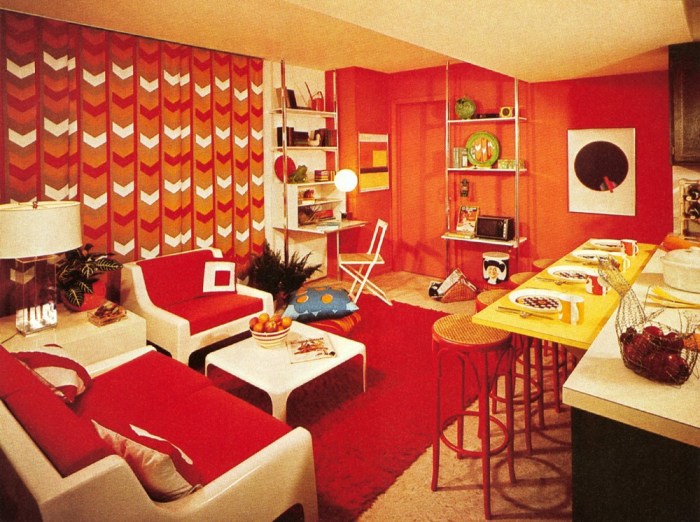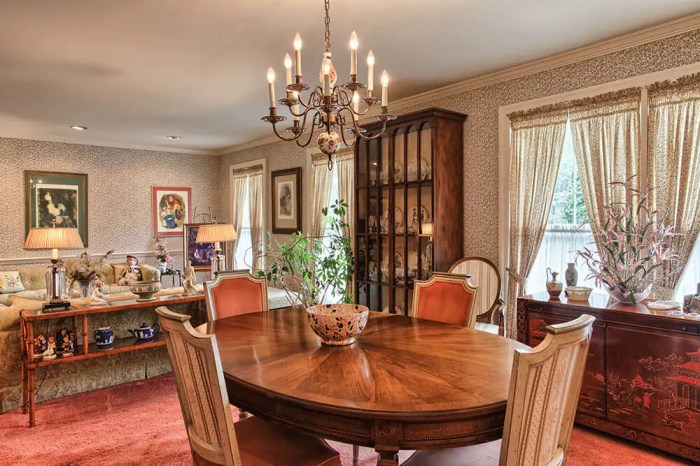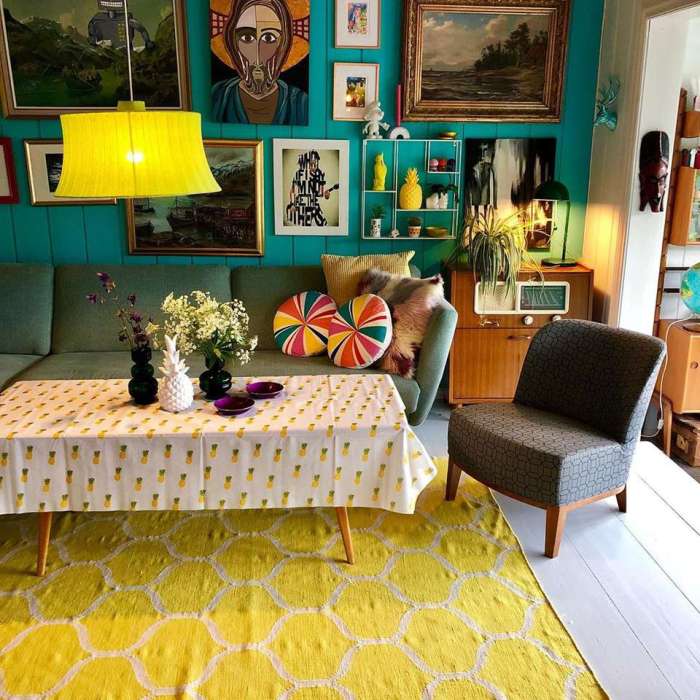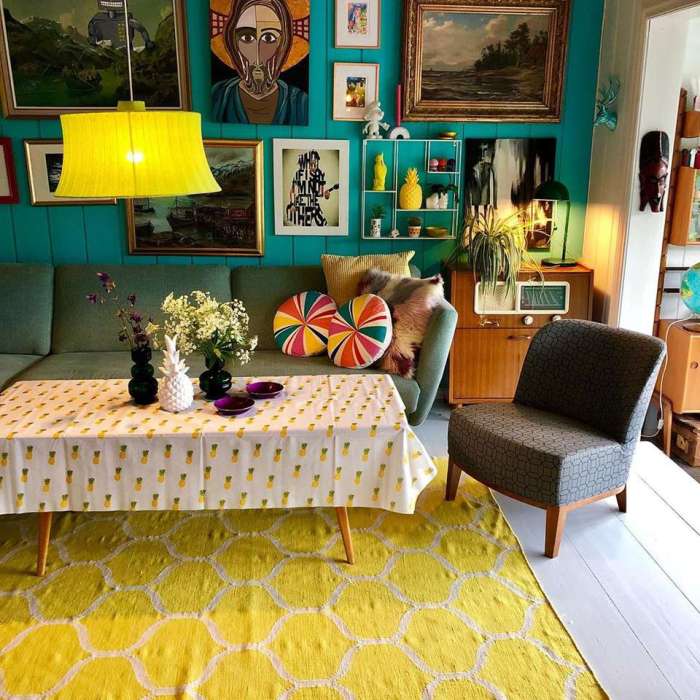70s house interior design, a style defined by bold colors, geometric patterns, and a touch of bohemian flair, continues to captivate homeowners today. This era of design, shaped by cultural shifts and a desire for individuality, embraced natural textures, vibrant hues, and innovative furniture designs, creating spaces that were both functional and visually stimulating.
From the iconic shag carpets and macrame wall hangings to the sleek lines of mid-century modern furniture, the 70s aesthetic offers a unique blend of retro charm and modern sensibilities.
This style reflects a time of social and cultural upheaval, where people sought to express themselves through their homes. The 70s design movement embraced a sense of freedom and experimentation, leading to a diverse range of styles, from the minimalist and sleek to the eclectic and bohemian.
This exploration of diverse aesthetics is what makes 70s house interior design so fascinating and relevant today, as homeowners continue to seek inspiration from this era of design.
The Evolution of 70s House Interior Design

The 1970s was a decade of significant change in the world, and this change was reflected in the evolution of interior design. The 70s saw a shift away from the more formal and traditional styles of the past, embracing a more casual, relaxed, and eclectic aesthetic.
This evolution was driven by a variety of factors, including the influence of different cultures, the rise of new movements, and the changing social landscape.
Key Trends and Substyles
The 1970s saw a wide range of trends and substyles emerge in interior design. Some of the most popular included:
- Mid-Century Modern:This style, which originated in the 1950s, continued to be popular in the 1970s. It emphasized clean lines, simple forms, and natural materials. The furniture was often characterized by its functionality and lack of ornamentation.
- Bohemian:The bohemian style, which originated in the 1960s, became increasingly popular in the 1970s. It was characterized by its eclectic mix of patterns, textures, and colors. The furniture was often vintage or handcrafted, and the spaces were filled with plants, textiles, and other decorative objects.
- Art Deco:Art Deco, a style that originated in the 1920s, experienced a revival in the 1970s. It was characterized by its geometric patterns, bold colors, and luxurious materials. The furniture was often made of chrome, glass, and lacquered wood.
- Rustic:The rustic style, which was inspired by the natural world, became popular in the 1970s. It emphasized natural materials, such as wood, stone, and leather. The furniture was often handcrafted and had a rough, unfinished look.
Influence of Different Cultures and Movements, 70s house interior design
The evolution of 70s house interior design was influenced by a variety of cultures and movements. Some of the most significant influences included:
- The Counterculture Movement:The counterculture movement of the 1960s and 1970s had a significant impact on interior design. The movement’s emphasis on peace, love, and freedom led to the adoption of more relaxed and informal styles. The use of natural materials, earthy colors, and bohemian decor became increasingly popular.
The 70s saw a surge in bold colors and geometric patterns, often with a focus on natural materials. This era’s design aesthetic can be seen in modern homes, particularly in smaller spaces like a 2bhk house. If you’re looking for inspiration for a 2bhk house interior design, you can check out this website 2bhk house interior design for some great ideas.
While 2bhk homes may not be as spacious as larger homes, you can still incorporate elements of 70s style like earthy tones, macrame wall hangings, and statement furniture pieces.
- The Japanese Influence:The Japanese influence on interior design became increasingly prominent in the 1970s. The Japanese aesthetic, which emphasized simplicity, minimalism, and natural materials, resonated with the counterculture movement. The use of bamboo, rice paper, and tatami mats became popular in Western homes.
- The Global Influence:The 1970s saw a growing interest in global cultures. This led to the incorporation of elements from around the world into interior design. For example, Moroccan rugs, Indian textiles, and African masks became popular decorative elements.
Early vs. Late 70s House Interior Design
There were some significant differences between early and late 70s house interior design. Early 70s interior design was more influenced by the counterculture movement and the mid-century modern style. Homes were often decorated with earthy colors, natural materials, and simple furniture.
The focus was on creating a relaxed and informal atmosphere. Late 70s interior design was more eclectic and luxurious. The influence of Art Deco and other global styles became more prominent. Homes were often decorated with bold colors, geometric patterns, and luxurious materials.
The focus was on creating a glamorous and sophisticated atmosphere.
The 70s saw a surge in bold patterns and vibrant colors in home decor, a stark contrast to the minimalist approach of the preceding decades. This era embraced a sense of freedom and experimentation, evident in the use of earthy tones, geometric shapes, and unconventional furniture designs.
However, for a more traditional aesthetic, one could draw inspiration from the elegance of 1930s semi-detached house interior design , with its focus on streamlined forms, subtle details, and a timeless charm. This fusion of styles can create a unique and captivating space, reflecting both the vibrancy of the 70s and the enduring appeal of classic design elements.
“The 1970s was a time of experimentation and creativity in interior design. The decade saw the emergence of a wide range of trends and substyles, influenced by a variety of cultures and movements. The result was a unique and eclectic aesthetic that reflected the spirit of the times.”
Interior Design Historian, [Author’s Name]
Modern Interpretations of 70s House Interior Design

The 70s design aesthetic, once considered outdated, is experiencing a resurgence in modern homes. This revival isn’t about replicating the era’s exact styles but rather incorporating key elements into contemporary spaces. Modern interpretations of 70s design bring a fresh perspective to the era’s signature features, creating a unique and timeless look.
Examples of Contemporary Designs Drawing Inspiration from the 70s
The influence of 70s design is evident in contemporary spaces, where elements like bold colors, geometric patterns, and natural materials are incorporated with a modern twist.
- Geometric Patterns:While 70s interiors often featured large, bold patterns, modern interpretations favor more subtle and refined versions. Geometric patterns, such as chevron, herringbone, and abstract designs, are incorporated into upholstery, rugs, and wallpaper, adding visual interest without overwhelming the space.
The 70s saw a surge in bold patterns and earthy tones, with a focus on creating a warm and inviting atmosphere. While the design aesthetic of that era might seem dated today, it can still inspire modern interiors. For example, you can incorporate elements of 70s design into a 10 marla house interior design by using a neutral color palette and adding pops of color with vintage furniture or accessories.
This creates a unique blend of modern and retro styles, making your home feel both stylish and comfortable.
For instance, a contemporary living room might feature a chevron-patterned rug paired with sleek, modern furniture, creating a sophisticated and stylish ambiance.
- Earthy Color Palettes:The 70s were known for their earthy color palettes, and this trend continues in modern homes. Earthy tones like burnt orange, olive green, and terracotta are used as accents, creating a warm and inviting atmosphere. For example, a modern kitchen might incorporate terracotta tile backsplash or burnt orange accents in the cabinetry, bringing warmth and a touch of vintage charm.
- Natural Materials:The use of natural materials, such as wood, leather, and stone, was a hallmark of 70s design. These materials continue to be popular in modern interiors, adding a sense of authenticity and grounding the space. A modern bedroom might feature a wooden headboard, leather armchair, and stone accents, creating a luxurious and inviting feel.
- Bold Statement Pieces:The 70s embraced statement pieces, and this trend remains relevant today. A modern living room might feature a bold, geometric sofa or a statement lighting fixture, adding a touch of personality and visual interest. For instance, a modern interpretation of a 70s velvet sofa might feature a sleek, minimalist design with bold, geometric cushions, bringing a touch of vintage flair to the contemporary space.
The Impact of 70s House Interior Design

The 1970s saw a significant shift in interior design trends, and its impact continues to be felt in contemporary design. This era’s bold and eclectic style, characterized by its embrace of natural elements and a focus on comfort, has left an enduring legacy on the world of design.
The Lasting Influence of 70s Design
The 70s design movement’s enduring influence on contemporary trends is undeniable. Many key elements of 70s design have found their way back into modern homes, albeit with a more refined and sophisticated touch. The resurgence of 70s design is a testament to its timeless appeal and its ability to adapt to contemporary tastes.
Epilogue
The 70s house interior design movement, with its bold colors, geometric patterns, and unique furniture designs, has left an enduring mark on contemporary design trends. From the resurgence of mid-century modern furniture to the popularity of natural textures and earthy tones, the 70s aesthetic continues to inspire homeowners seeking to create spaces that are both stylish and comfortable.
Whether you choose to embrace the full retro vibe or incorporate subtle elements into your modern home, the 70s design movement offers a wealth of inspiration for creating a space that reflects your personal style and resonates with your sense of individuality.
Helpful Answers: 70s House Interior Design
What are some popular 70s color palettes?
Popular 70s color palettes often featured earthy tones like burnt orange, mustard yellow, and forest green, paired with vibrant accents like turquoise, teal, and hot pink.
How can I incorporate 70s design elements into a modern home?
You can incorporate 70s elements subtly by using a few key pieces, like a vintage armchair or a patterned rug. Alternatively, you can create a full-fledged 70s-inspired space by embracing bold colors, geometric patterns, and iconic furniture designs.
What are some iconic 70s furniture pieces?
Iconic 70s furniture pieces include the Eames Lounge Chair, the Barcelona Chair, and the Togo Sofa. These pieces are known for their sleek lines, comfortable designs, and enduring appeal.

